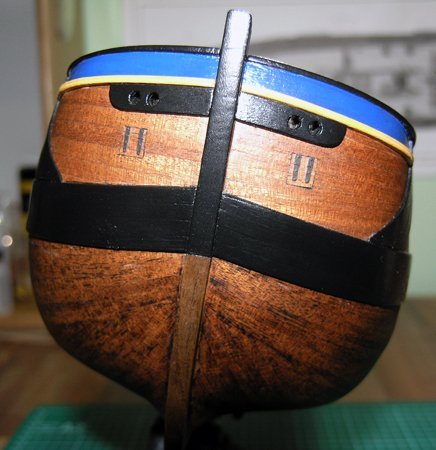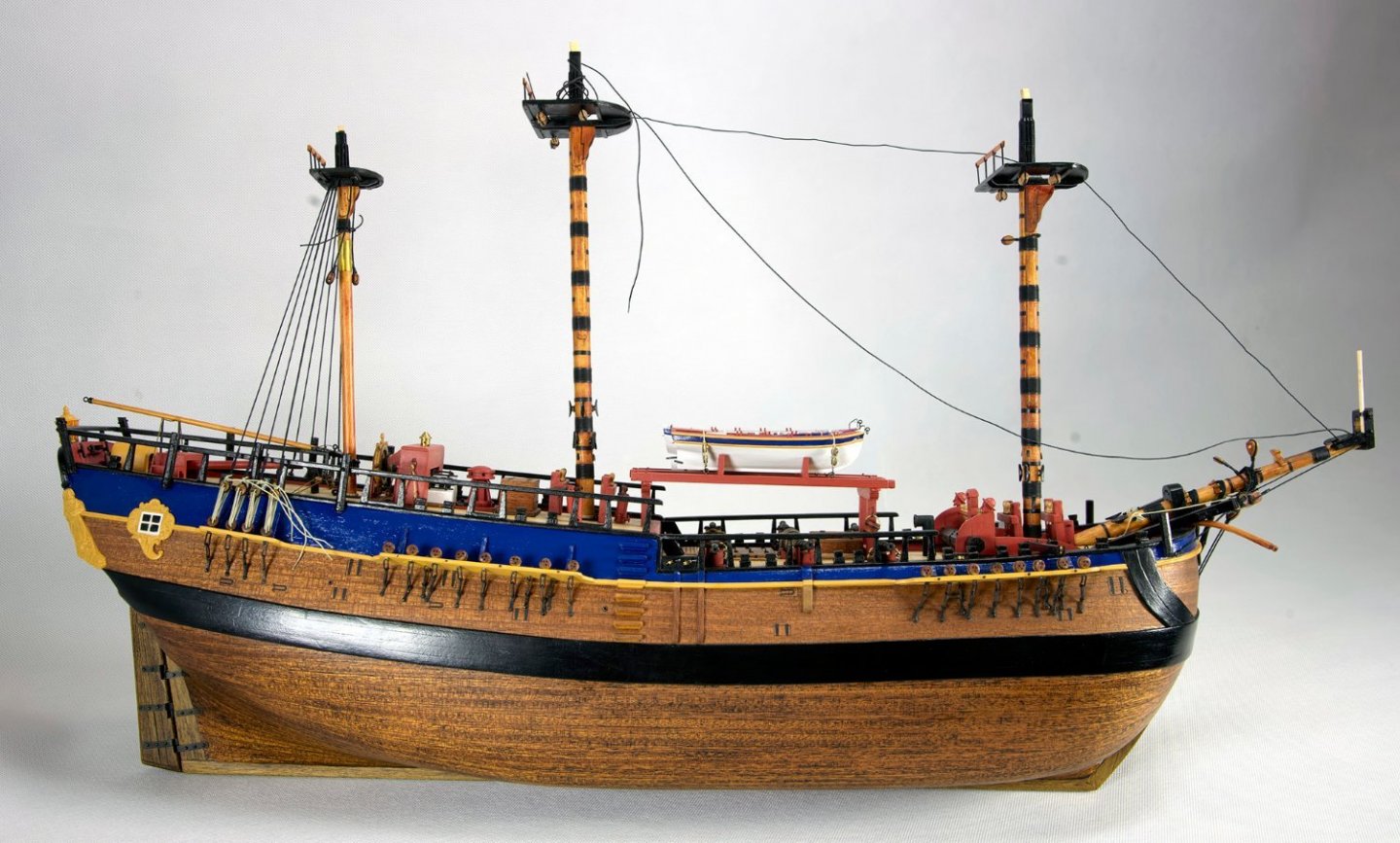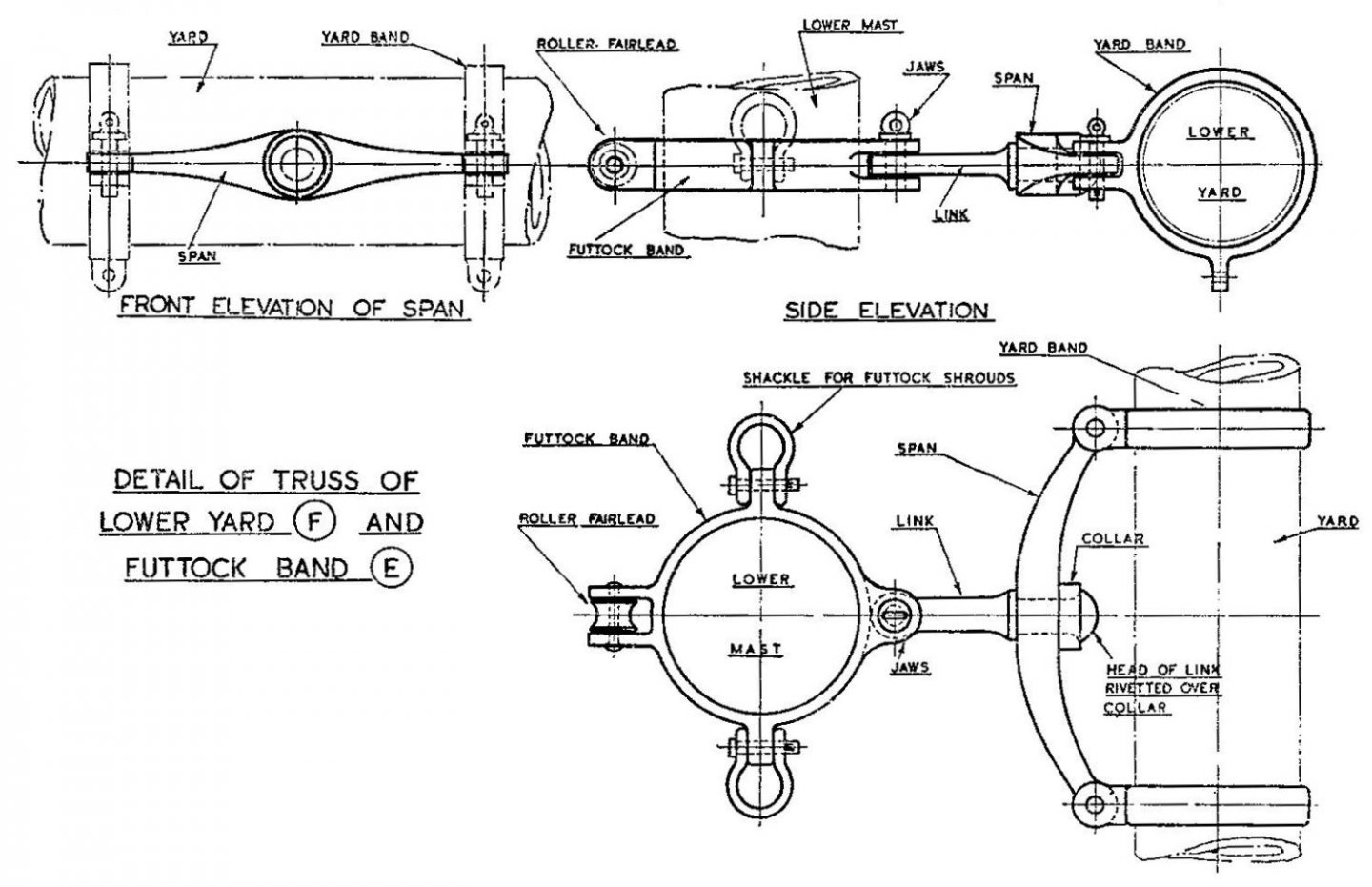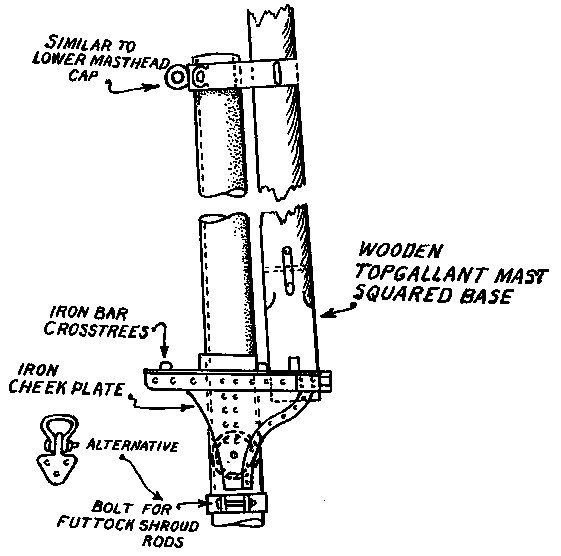-
Posts
5,918 -
Joined
-
Last visited
Content Type
Profiles
Forums
Gallery
Events
Everything posted by BANYAN
-
At that size, I think your plan should work. I used a two-part 'liquid glass' product from Craftworks (sold in Spotlight) to do mine, but I have seen modellers also use PVA as it dries clear. I have used acrylic rod inserted into thin wall brass tubing (cut a little thick then polished down to the required thickness) for my HMCSS Victoria build ( cheers Pat
- 88 replies
-
- Australia II
- Finished
-
(and 2 more)
Tagged with:
-
Hi and thanks for looking in. I am not sure whether this is similar to Bligh's boat as I have never done a comparison, but it did tie in somewhere between Parkin's and Marquardt's versions of a long boat. Unless we find a 'way back' machine, no one will know for sure. cheers Pat
- 517 replies
-
- Endeavour
- Artesania Latina
-
(and 1 more)
Tagged with:
-
Looking good; are you going to fill the portholes with simulated glass? cheers Pat
- 88 replies
-
- Australia II
- Finished
-
(and 2 more)
Tagged with:
-
You're really making some serious progress on the rigging now Keith; looking good mate. cheers Pat
-
Nice work Rob, doing so much off the model where you have better access will make a great difference. cheers Pat
- 3,560 replies
-
- clipper
- hull model
-
(and 2 more)
Tagged with:
-
Avery nice start, the hull is crisp and nicely detailed for that scale. Look forward to seeing more. cheers Pat
- 88 replies
-
- Australia II
- Finished
-
(and 2 more)
Tagged with:
-
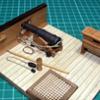
NAIAD 1797 by Bitao - 1:60
BANYAN replied to Bitao's topic in - Build logs for subjects built 1751 - 1800
More of your top quality work to feast our eyes on Bitao; many thanks Pat -
The effort was worth it Steven; looking good. cheers Pat
- 740 replies
-
- Tudor
- restoration
-
(and 4 more)
Tagged with:
-
Very nice work Eberhard; think your 'yellow' choice is very close - well with much of the material I have seen while researching. cheers Pat
-
Congrats Greg; well deserved and great to see some recognition of your skills. cheers Pat
-
Hi Keith, as usual your workmanship is simply superb. WRT leather, I contacted a local saddler who put me onto their supplier. After some discussion on what I was trying to achieve, they were able to supply me with some small offcuts of very thin leather which I was able to 'scrape' to get it even finer. May be worth a try? cheers Pat
-
Everything has been said of your skills and the quality of finish so all I can say is WOW ! I just love all that fine detail in brass. cheers Pat
-
You're making good progress, every improvement no matter how minor adds to better detailing of your model. Peter, if you have Maquardft's AOTS be aware there is a scaling error printed for the masts (page 88) Masts and Yards G4. I spoke with the author whom informed he provided all his drawings at 1:48 but the publishing team rescaled them but in this instance put the wrong scale on the page. shipaholic found and alerted us to this error and may be able to point out any further issues, but I found the rest of the book OK (leaving aside any differences in opinion of some of the fittings, such as bumpkins, etc. cheers pat
- 79 replies
-
- Endeavour
- Artesania Latina
-
(and 1 more)
Tagged with:
-
Very nice work Rob, looks very effective. cheers Pat
- 3,560 replies
-
- clipper
- hull model
-
(and 2 more)
Tagged with:
-
Nice work Peter, looking good! AL's hull is fairly accurate so should make for a nice model. I ignored everything else AL provided and scratch built or 'bashed' most of the other fittings when I built mine. I'll tag along with interest. cheers Pat
- 79 replies
-
- Endeavour
- Artesania Latina
-
(and 1 more)
Tagged with:
-
Your fingers may no longer be strong enough Michael, but your skills have not diminished. Nice work. cheers Pat
-
Hi Peter, I also would be interested. My understanding was Endeavour was coated with 'brown stuff' with a sacrificial timber sheathing. How the sheathing was attached I do not know. The brown stuff was a pitch/tar and straw mix I think - so learning more about this will be of interest. I simulated this on my model of HMB Endeavour by initially coating the bottom with motorcar 'underbody' preservative (bitumen mix). This went on well and dried beautifully and looked just right. However, this was in winter and when the first hot days arrived it went very soft and started to 'slouch' in places 😟. I then scraped and wiped it off which left a nice darkened effect on the walnut planking I used - the net result (accidental finish) worked for me in providing a difference in wood finish to delineate the upper and lower planking while leaving the planking detail still visible). Below are a couple of pictures, but the finish may not be to your taste. cheers Pat
-
Those planes look great Greg, a lot of detail and very neat painting for something so tiny. cheers Pat
- 126 replies
-
- Thetis Bay
- Finished
- (and 4 more)
-
Keith (and Rob), sorry not trying to confuse further, this is offered more as an FYI. The general practice, at least for the British, in this period was to use what was called a neckless to terminate the futtock shrouds at the associated lower mast. For the navy this was a solid iron band with a single (large) or individual eyebolts (usually on the futtock/truss band), or to a long 'U' bolt to which the shrouds attached. For mercantile ships, the practice was to use a chain neckless. Attached are a couple of pics from Underhill "The Masting and Rigging of the Clipper Ship and Ocean Carrier' and G Campbell 'China Tea Clippers'. If a single point was used, it was usually in the form of a 'span shackle'. The single point seems to have been more common and a larger eyebolt would successfully mimic this. cheers Pat
- 3,560 replies
-
- clipper
- hull model
-
(and 2 more)
Tagged with:
-
Welcome back to this restoration Steven, I have been missing these updates. cheers Pat
- 740 replies
-
- Tudor
- restoration
-
(and 4 more)
Tagged with:
-
A good plan Rob, tightly furled sails (harbour fashion) will look great. cheers Pat
- 3,560 replies
-
- clipper
- hull model
-
(and 2 more)
Tagged with:
About us
Modelshipworld - Advancing Ship Modeling through Research
SSL Secured
Your security is important for us so this Website is SSL-Secured
NRG Mailing Address
Nautical Research Guild
237 South Lincoln Street
Westmont IL, 60559-1917
Model Ship World ® and the MSW logo are Registered Trademarks, and belong to the Nautical Research Guild (United States Patent and Trademark Office: No. 6,929,264 & No. 6,929,274, registered Dec. 20, 2022)
Helpful Links
About the NRG
If you enjoy building ship models that are historically accurate as well as beautiful, then The Nautical Research Guild (NRG) is just right for you.
The Guild is a non-profit educational organization whose mission is to “Advance Ship Modeling Through Research”. We provide support to our members in their efforts to raise the quality of their model ships.
The Nautical Research Guild has published our world-renowned quarterly magazine, The Nautical Research Journal, since 1955. The pages of the Journal are full of articles by accomplished ship modelers who show you how they create those exquisite details on their models, and by maritime historians who show you the correct details to build. The Journal is available in both print and digital editions. Go to the NRG web site (www.thenrg.org) to download a complimentary digital copy of the Journal. The NRG also publishes plan sets, books and compilations of back issues of the Journal and the former Ships in Scale and Model Ship Builder magazines.




